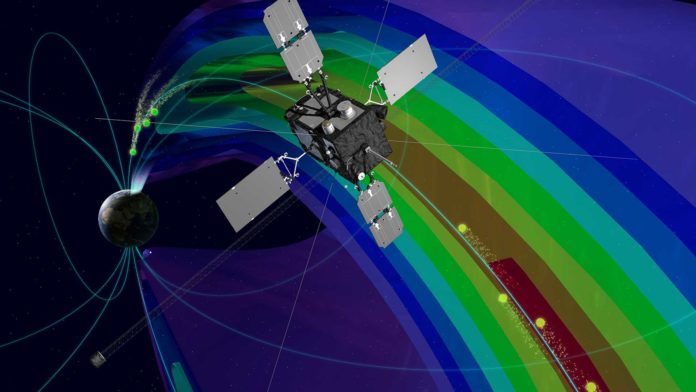An aurora is a natural light that is visible at night. It appears in colorful blue, red, yellow, green, and orange lights that shift gently and change shape like softly blowing curtains.
Even though auroras are best seen at night, they are caused by the Sun. When the charged particles from the sun strike atoms and molecules in Earth’s atmosphere, they excite those atoms, causing them to light up.
The electric potential accelerating the aurora-producing electrons has been reported to lie immediately above the ionosphere, at a few altitudes of thousand kilometers. However, the highest altitude at which the potential parallel drop accelerates the precipitating electron is still unclear.
In a recent study, scientists from the Nagoya University and colleagues in Japan, Taiwan, and the U.S. found a critical ingredient for auroras exists much higher in space than previously thought. The dazzling light displays in the polar night skies require an electric accelerator to propel charged particles down through the atmosphere.
Shun Imajo of Nagoya University’s Institute for Space-Earth Environmental Research, the study’s first author, said, “Most electrons in the magnetosphere don’t reach the part of the upper atmosphere called the ionosphere because the Earth’s magnetic field repels them.”
Until now, scientists had assumed that the electron acceleration happened at altitudes between 1,000 and 20,000 kilometers above Earth. But, this new study revealed that the acceleration region extends beyond 30,000 kilometers.
Imajo said, “Our study shows that the electric field that accelerates auroral particles can exist at any height along a magnetic field line and is not limited to the transition region between the ionosphere and magnetosphere at several thousand kilometers. This suggests that unknown magnetospheric mechanisms are at play.”
For the study, scientists analyzed the data from ground-based imagers in the US and Canada and the electron detector on Arase, a Japanese satellite studying a radiation belt in Earth’s inner magnetosphere. Using the data, scientists were able to quantify the upward and downward movements of electrons and protons. They also found the acceleration region of electrons began above the satellite and extended below it.
Scientists are now looking forward to examining data from multiple aurora events, compare high-altitude and low-altitude observations, and conduct numerical simulations of electric potential.
Imajo said, “Understanding how this electric field forms will fill in gaps for understanding aurora emission and electron transport on Earth and other planets, including Jupiter and Saturn.”
Journal Reference:
- Shun Imajo et al. Active auroral arc powered by accelerated electrons from very high altitudes, Scientific Reports (2021). DOI: 10.1038/s41598-020-79665-5
